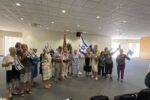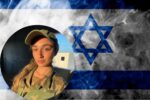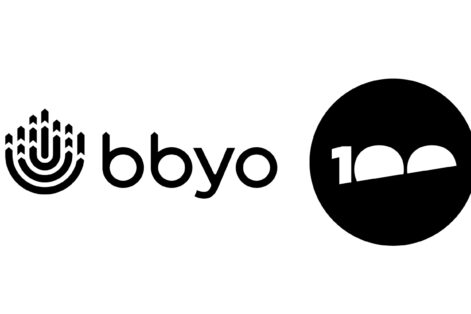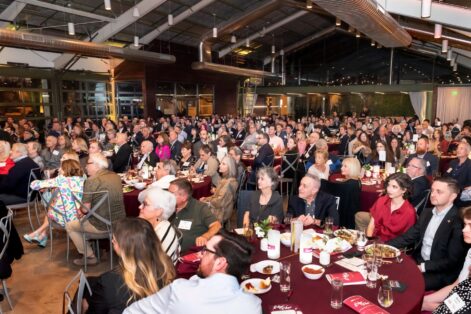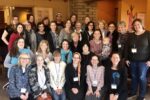In March 2017, the Wall Street Journal published an article entitled “Memory Unearthed: The Lodz Ghetto Photographs of Henryk Ross,” about an exhibition of photographs taken in the Lodz Ghetto. After imprisoning the Jews in the Lodz Ghetto, the Germans gave Mr. Ross a camera and told him to take pictures of life in the ghetto—propaganda pictures that is; pictures that were posed and taken of the ghetto “elite.” The elite were those who worked as administrative functionaries and policemen. Although far from normal, their lives were modestly better than the other ghetto Jews. Under threat of death, Henryk was forbidden to take any picture of real ghetto life and the suffering of its masses. With the help of his wife, Stephania, and close acquaintances, he managed to clandestinely take pictures of the hellish life in the ghetto over a four year period. When the Germans decided to liquidate the ghetto and ship its Jewish inhabitants to Auschwitz, Henryk took his final photos, placed all the photos in metal containers and buried them. If he didn’t survive, he hoped that one day someone would find them. Henryk and Stephania survived. They returned to the ghetto and removed all the tins. The unearthed photos, on loan from the Art Gallery of Ontario, were being exhibited in the Museum of Fine Arts, Boston. [Editor’s note: This exhibition was on view at the Museum of Jewish Heritage – A Living Memorial to the Holocaust from February – August 2018.]
My father and his family lived in Lodz. They were imprisoned in the Lodz Ghetto from the time of its formation in the spring of 1940 until its liquidation in August 1944. They endured starvation, mass deportations, unspeakable deprivations, and the frequent terrors that the Nazi regime inflicted upon the Jews. My grandfather and an uncle died in the Lodz Ghetto.
In May 2017, my husband and I had a wedding to attend in New York. We decided to go to New York first, and then to Boston. I was iffy about traveling to Boston to see the photos. I had little hope of finding a picture of my father and uncle, the only two members of their nine-member family to survive the Holocaust. When my father was alive, we looked through the first book of Henryk Ross’s photos of the ghetto so I was familiar with them. I did not expect that there would be anything new, but my husband encouraged me to go. So my cousin (her father was also in the Lodz Ghetto), my husband, and I went to Boston.
At the entrance to the exhibition was a short film in which Henryk and Stephania talk about their experiences in the Lodz Ghetto and what it took for them to take the clandestine photographs. They spoke about life in the ghetto and their lives after the war. So traumatized was Henryk by his job in the ghetto that after the war he never took another photograph again.
Hoping against hope to find a photo of my father, I felt my best chance was to scour the group photographs of men working. I knew my father worked in a woodworking factory. I looked intently at those pictures. I also looked for pictures of my uncle. I saw neither of them.
Having lost hope at the prospect of seeing my father in a picture, I continued to walk around the exhibit. Suddenly, I came to an abrupt stop. In front of me was a grainy picture of a young man. I stared at the picture. I called my husband and my cousin over.
“That is my father,” I told them.
I wanted confirmation from an expert in facial recognition. I contacted the United States Holocaust Memorial Museum. They told me that the ear and its attachment to the head is a determinant in facial recognition. [Editor’s note: This is how Mossad was able to identify Adolf Eichmann in Argentina.] I contacted our local police department who referred me to the FBI. I never heard back from them.
I contacted an expert in facial recognition. I sent her pictures of my father a few months after the war. She told me that the ear was too blurry and she therefore could not make a 100 percent confirmation. However, she felt 99 percent certain that the picture was my father.
Finally, I contacted Maia Sutnik, the curator at the Art Gallery of Ontario. Ms. Sutnik compared the photos and said that she agreed that the picture was my father.
The man in the photo now has a name, Gedalia Geclewicz, date, August 27, 1944. The photo of him adorns the cover of the memoir I wrote about my parents’ Holocaust experiences, The Birds Sang Eulogies: A Memoir.
Whenever I look at the photo and think about my 20-year-old father at that moment, my heart breaks. He has every reason to be confused, worried, and distraught. Unbeknownst to him, over the next nine months, he will see his mother’s, sister’s and nephew’s smoke belching out of the smoke stacks at Auschwitz; their ashes will fall on him. He will witness the death of two brothers in concentration camps. He will barely be alive when he is liberated on May 2, 1945.
Mirla G. Raz is a retired speech pathologist and past president of the Phoenix Holocaust Survivors’Association. She is a member of the Phoenix Holocaust Associations’ Board and its Education Chair. Ms. Raz’ newest publication is The Birds Sang Eulogies: A Memoir. The book recounts the harrowing experiences of her parents, Anna and Daniel Geslewitz during the Holocaust, as they struggled to survive the Nazi’s attempted extermination of the Jews. She is also the author of the popular Help Me Talk Right books: How to Teach a Child to Say the “R” Sound in 15 Easy Lessons, How to Teach a Child to Say the “S” Sound in 15 Easy Lessons, How to Teach a Child to Say the “L” Sound in 15 Easy Lessons and Preschool Stuttering: What Parents Can Do. Ms. Raz is a contributing author to Children’s Speech Sound Disorders, first and second editions. Ms. Raz is married to Zohar Raz. They are the proud parents of two daughters and grandparents to two grandchildren with another grandchild on the way.
This post has been contributed by a third party. The opinions, facts and any media content are presented solely by the author, and JewishPhoenix assumes no responsibility for them. MORE











